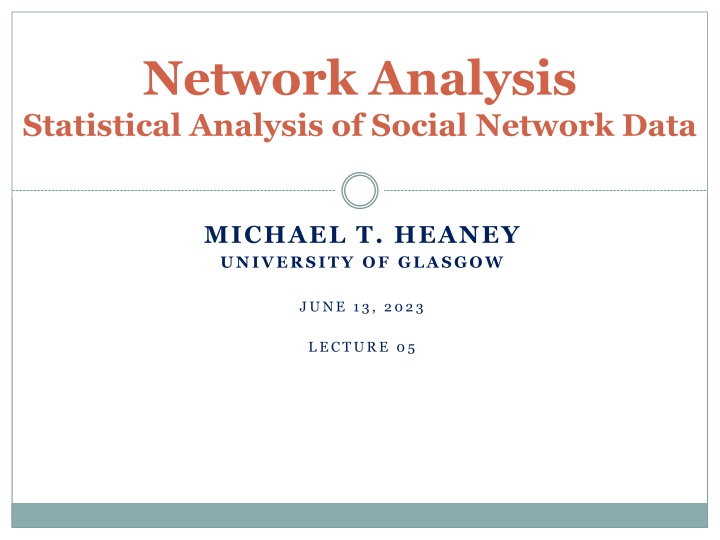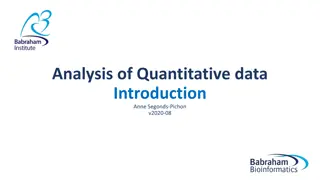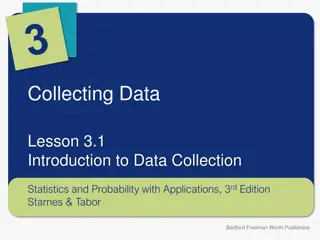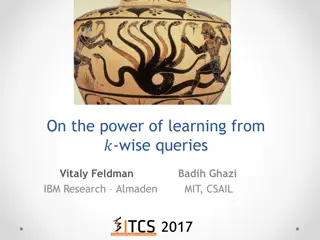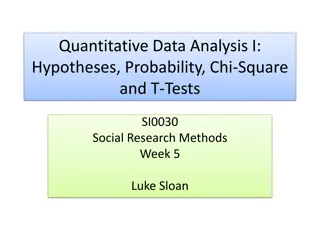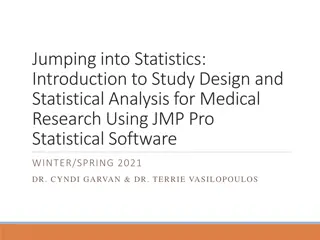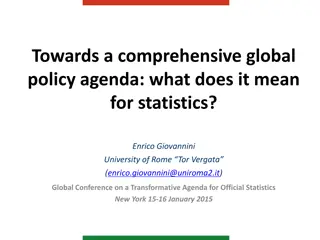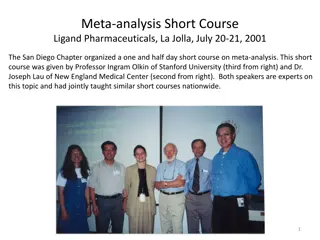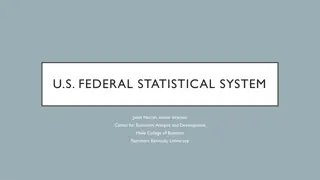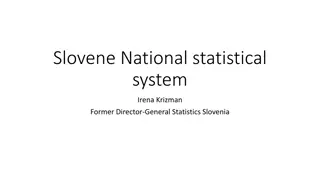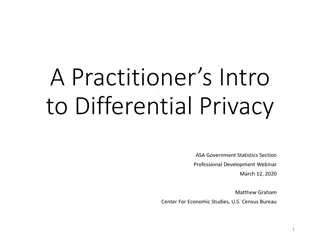Statistical Analysis of Social Network Data
Analyzing social network data involves inferential statistics, regression with network autocorrelation, addressing network dependence problems, regression on ties in a network, and simulating independence through permutation tests and the Quadratic Assignment Procedure (QAP).
Download Presentation

Please find below an Image/Link to download the presentation.
The content on the website is provided AS IS for your information and personal use only. It may not be sold, licensed, or shared on other websites without obtaining consent from the author.If you encounter any issues during the download, it is possible that the publisher has removed the file from their server.
You are allowed to download the files provided on this website for personal or commercial use, subject to the condition that they are used lawfully. All files are the property of their respective owners.
The content on the website is provided AS IS for your information and personal use only. It may not be sold, licensed, or shared on other websites without obtaining consent from the author.
E N D
Presentation Transcript
Network Analysis Statistical Analysis of Social Network Data MICHAEL T. HEANEY UNIVERSITY OF GLASGOW JUNE 13, 2023 LECTURE 05
The Problem of Network Dependence Observations in a network are not independent of one another as required in classical statistical analysis. AB AC AD AE BC BD BE CD CE DE
Regression with Network Autocorrelation We may want to use networked variables as dependent or independent variables in a typical regression. For example, degree, centrality, and brokerage are common variables. Follows models developed for spatial autocorrelation analysis, only the weighting matrix is determined by a network, rather than geographic contiguity. Example: Y = X + Y + e, where Y is normally distributed and N is a network.
Regression on Ties in a Network The network tie is the dependent variable. Why do two nations form an alliance? Why do they break the alliance? Chief problem: The independence assumption is severely violated. AB AC AD AE BC BD BE There are multiple possible approaches to address this problem.
Simulating Independence Many inferential statistics on networks involve some form of simulating independence. We will learn three simulation approaches: Permutation tests The quadratic assignment procedure Exponential random graph models
Permutation Tests Are sometimes referred to as randomization tests . Permutation tests are generally performed with a correlation or a regression framework when network autocorrelation may be present. An exact permutation test takes place by estimating the model with all possible orderings of the data. There are n! possibilities. n! = n x (n-1) x (n-2) . . . 3 x 2 x 1.
Quadratic Assignment Procedure (QAP) QAP is similar to a permutation test, but it is used in the case of an entire network, rather than just a regression analysis. QAP scrambles the rows and the columns of a matrix in order to order to generate a new distribution against which the empirical observations can be compared. An exact test is usually not possible, since the number of possibilities is too large. n2! Is generally an enormous number for most real networks.
